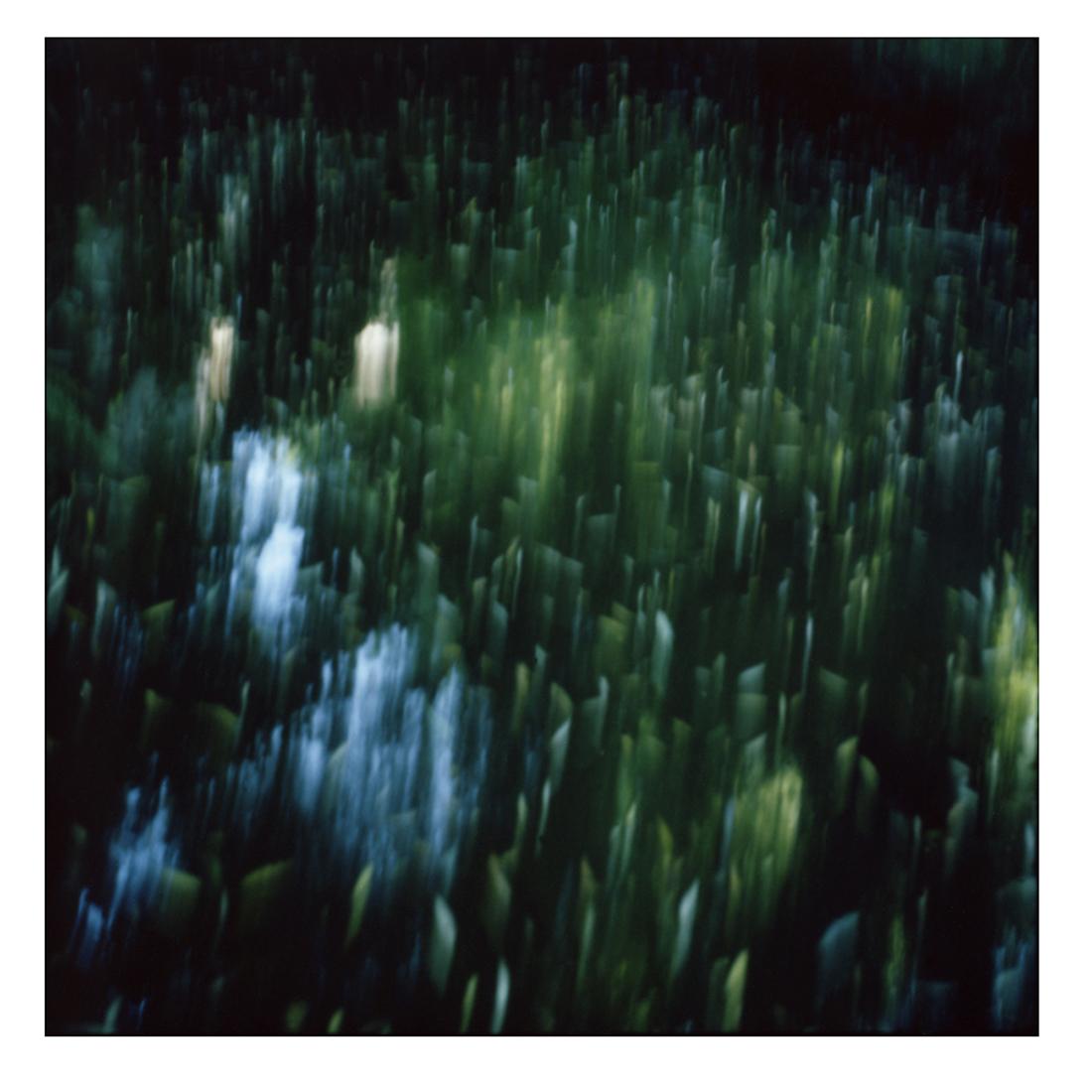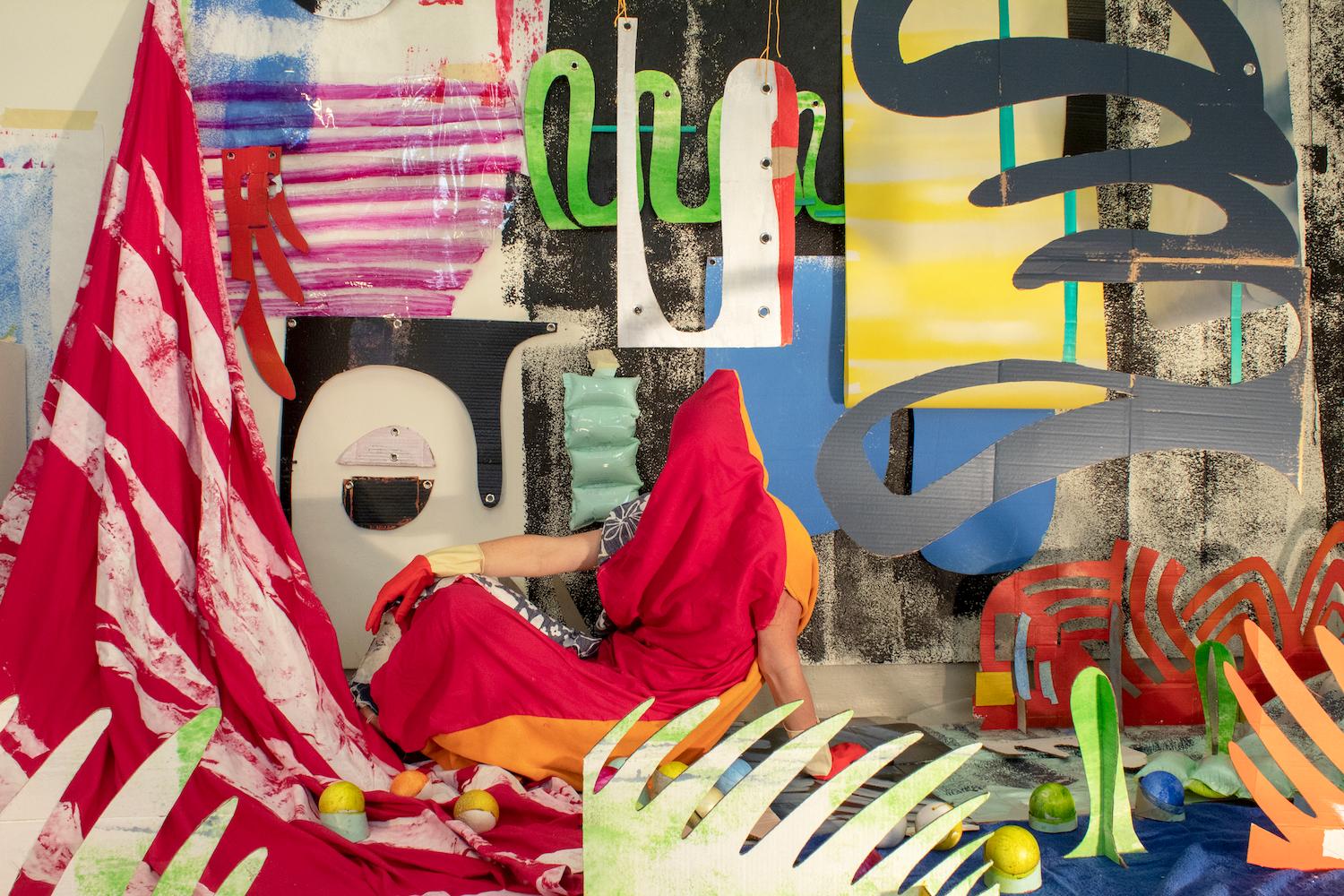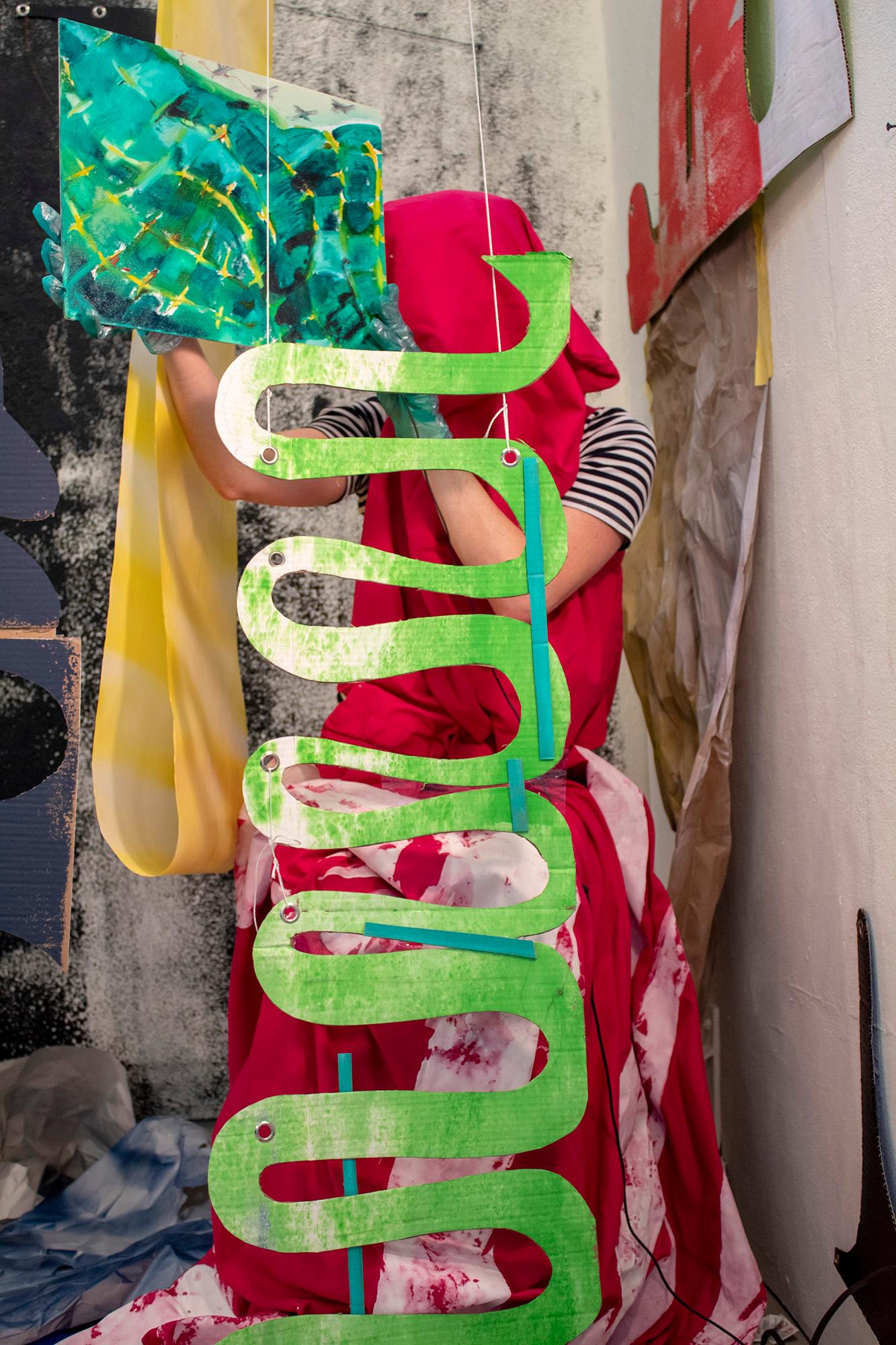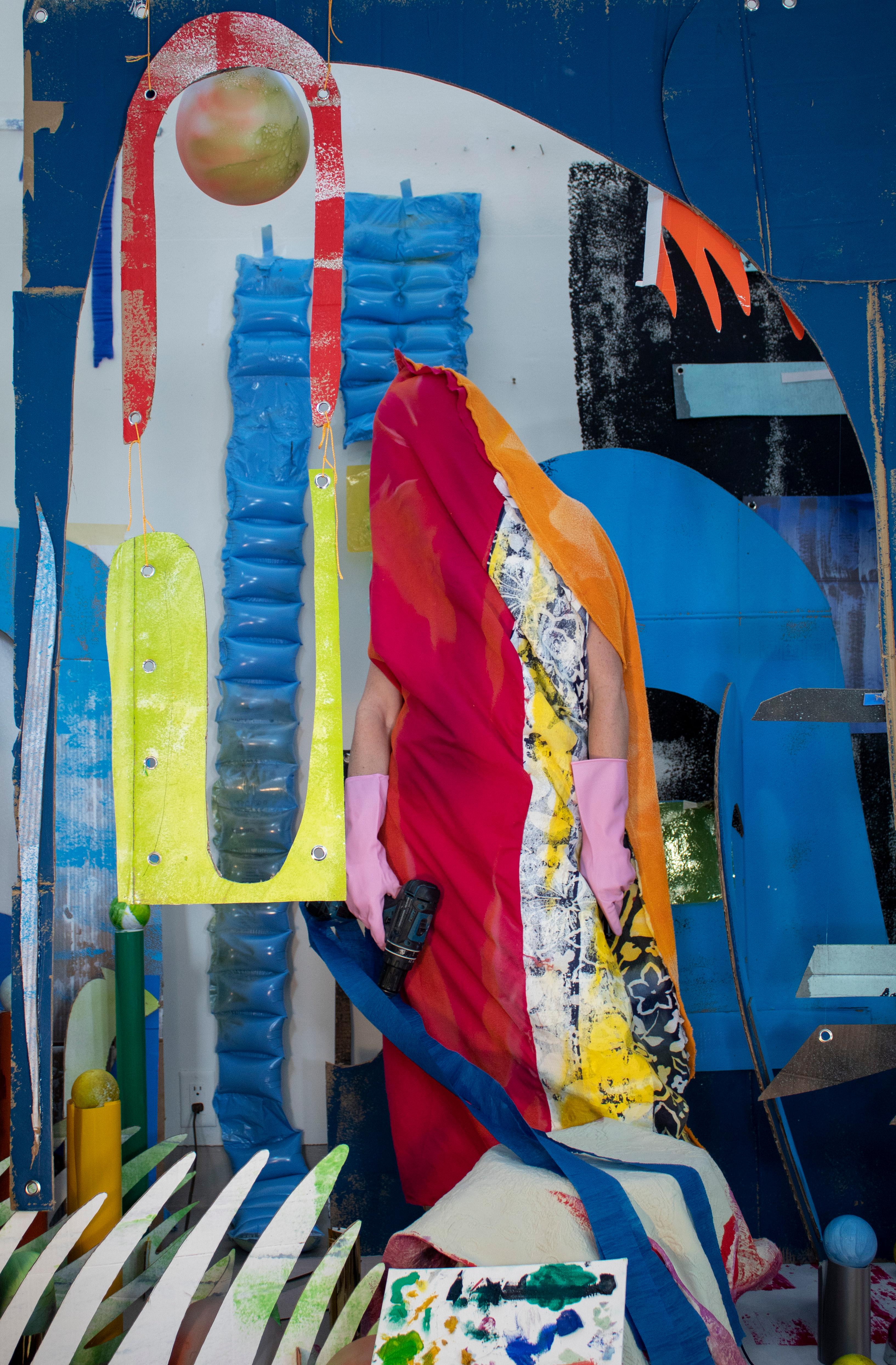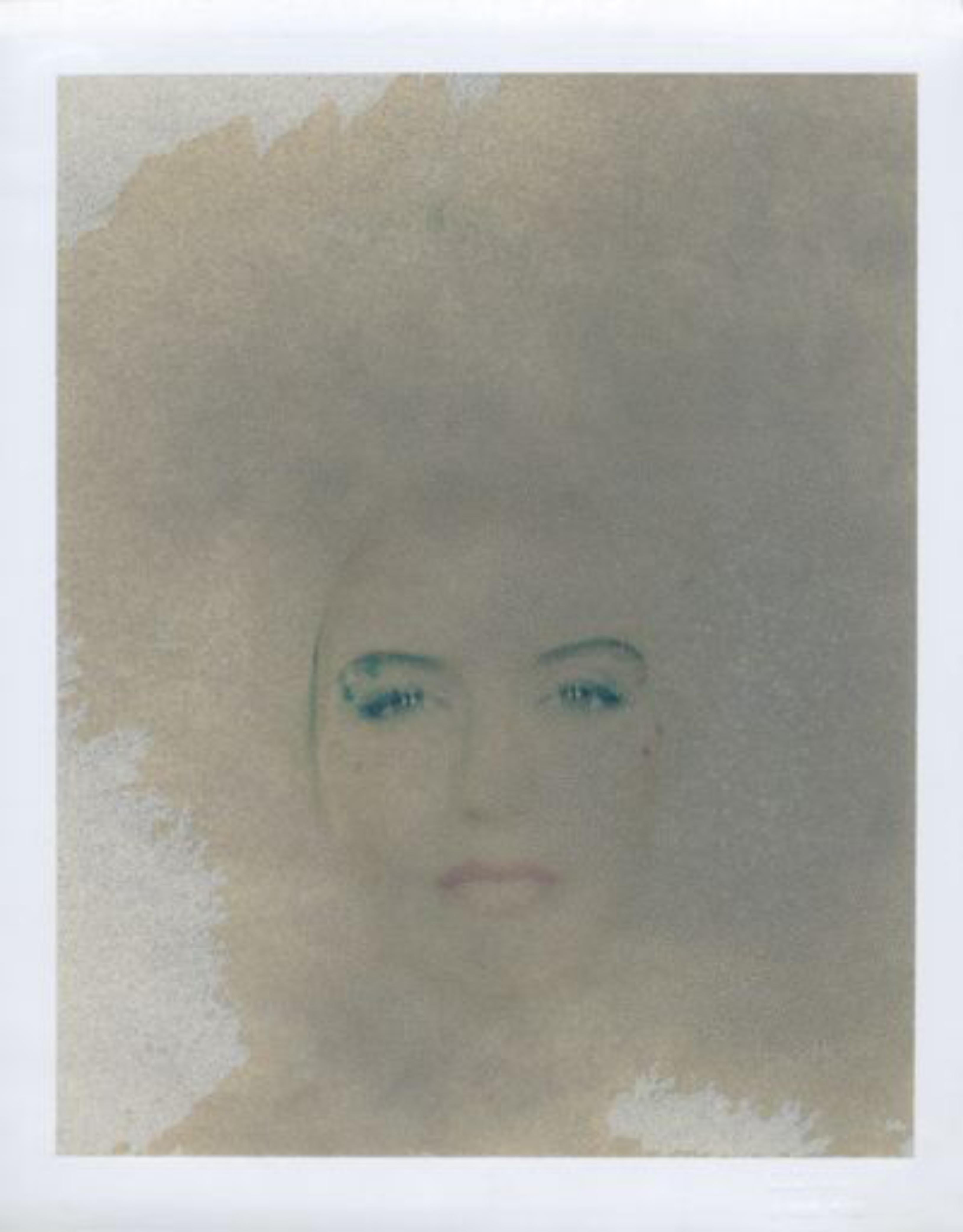Items Similar to Rapture (29 Palms, CA) - Polaroid, Contemporary, Color
Want more images or videos?
Request additional images or videos from the seller
1 of 5
Stefanie SchneiderRapture (29 Palms, CA) - Polaroid, Contemporary, Color2022
2022
About the Item
Rapture (29 Palms, CA) - 2022
48x46cm,
Edition of 10, plus 2 Artist Proofs.
Archival Print, based on the Polaroid.
Artist inventory Number 218829.
Signature label and Certificate.
Not mounted.
mounting available on request
A German view of the American West
The works of Stefanie Schneider evoke Ed Ruscha's obsession with the American experience, the richness of Georgia O'Keefe's deserts and the loneliness of Edward Hopper's haunting paintings. So how exactly did this German photographer become one of the most important artists of the American narrative of the 20th and 21st century?
Stefanie Schneider was born and raised in Germany but lives and works in Southern California. Exploring the American dream and capturing it with Polaroid instant film. Situated on the verge of an elusive super-reality, her photographic sequences provide the ambiance for loosely woven storylines and a cast of phantasmic characters that reflect a part of the narrator's life told from her perspective. Often about love, communication. sexuality and relationships. Schneider works with the chemical mutations of expired Polaroid film stock. Chemical explosions of color spreading across the surfaces undermine the photograph's commitment to reality and induce her characters into trance-like dreamscapes. Like flickering sequences of old road movies Schneider's images seem to evaporate before conclusions can be made - their ephemeral reality manifesting in subtle gestures and mysterious motives. Schneider's images refuse to succumb to reality, they keep alive the confusions of dream, desire, fact, and fiction yet they also explore the relationship with the medium and the viewer. The wabi-sabi 'ness' of Schneider's work can not be denied or ignored. It's a step of acceptance of 'flaws', gaps and distortions. Missing pieces of the puzzle. The artist flaunts, uses and exposes the unknown using expired Polaroid instant film intentionally. Presents it. What you do with that is up to you. That missing part of the picture is for you to include yourself, you fill it in with yourself. That might be critical that it's there at all, missing and missing the entire point altogether or by filling in the unknown with their own imagination. Even their own memories which then integrate the viewer and artist as one with limitless potential.
- Creator:Stefanie Schneider (1968, German)
- Creation Year:2022
- Dimensions:Height: 18.9 in (48 cm)Width: 18.12 in (46 cm)Depth: 0.04 in (1 mm)
- Medium:
- Movement & Style:
- Period:
- Condition:
- Gallery Location:Morongo Valley, CA
- Reference Number:1stDibs: LU652311490022
Stefanie Schneider
Stefanie Schneider received her MFA in Communication Design at the Folkwang Schule Essen, Germany. Her work has been shown at the Museum for Photography, Braunschweig, Museum für Kommunikation, Berlin, the Institut für Neue Medien, Frankfurt, the Nassauischer Kunstverein, Wiesbaden, Kunstverein Bielefeld, Museum für Moderne Kunst Passau, Les Rencontres d'Arles, Foto -Triennale Esslingen., Bombay Beach Biennale 2018, 2019.
About the Seller
4.9
Platinum Seller
These expertly vetted sellers are 1stDibs' most experienced sellers and are rated highest by our customers.
Established in 1996
1stDibs seller since 2017
964 sales on 1stDibs
Typical response time: 3 hours
- ShippingRetrieving quote...Ships From: Morongo Valley, CA
- Return PolicyA return for this item may be initiated within 7 days of delivery.
More From This SellerView All
- Captain Nelson (29 Palms, CA) - Contemporary, Polaroid, 21st Century, DreamBy Stefanie SchneiderLocated in Morongo Valley, CACaptain Nelson (29 Palms, CA) - 2007 37x49x3.5cm, Edition 1/5. Artist Inventory No 4033.01. Analog C-Print, Hand-printed by the artist, mounted on a wooden box with matte UV-Prot...Category
Early 2000s Contemporary Abstract Photography
MaterialsWood, Archival Paper, Photographic Paper, C Print, Color, Polaroid
- Highlights - Contemporary, Polaroid, Photograph, Childhood. 21st CenturyBy Cristina FontsareLocated in Morongo Valley, CAHighlights (2014), Edition 1/10. 40 x 40 cm. Printed in Canson Barita Fiber Rag 310gr, based on a Fuji Instant Film (not mounted). Signed on back with Certificate. Once / Cristina F...Category
2010s Contemporary Abstract Photography
MaterialsArchival Ink, Archival Paper, Color, Archival Pigment, Polaroid
- The Dreaming - Contemporary, Polaroid, Photograph, FigurativeBy Clare Marie BaileyLocated in Morongo Valley, CAThe Dreaming - 2019 Edition of 10 - 20x20 cm. Archival C-Print based on the Polaroid, not mounted. Signed on back and certificate. Clare Marie Bailey Works and Lives: UK Clare ...Category
2010s Contemporary Abstract Photography
MaterialsPhotographic Paper, C Print, Color, Polaroid, Archival Paper
- Dreamscape (Wastelands) - Proofs before Printing - only one availableBy Stefanie SchneiderLocated in Morongo Valley, CADreamscape (Wastelands), Proof before Printing, 2003, Analog C-Print, hand-printed by the artist on Fuji Crystal Archive Paper, matte surface, based on an expired Polaroid, not mount...Category
Early 2000s Contemporary Landscape Photography
MaterialsPhotographic Paper, C Print, Polaroid, Archival Paper, Color
- Living in a Dream (Till Death do us Part) - Contemporary, Polaroid, WomenBy Stefanie SchneiderLocated in Morongo Valley, CALiving in a Dream (Till Death do us Part) - 2005 20x20cm, Edition of 10, Archival C-Print print, based on the Polaroid. Certificate and Signature label, artist Inventory No. 9781. Not mounted. on offer is a piece from the movie "Till Death do us Part" Stefanie Schneider’s Till Death Do Us Part or “There is Only the Desert for You.” BY DREW HAMMOND Stefanie Schneider’s Til Death to Us Part is a love narrative that comprises three elements: 1. A montage of still images shot and elaborated by means of her signature technique of using Polaroid formats with outdated and degraded film stock in natural light, with the resulting im ages rephotographed (by other means) enlarged and printed in such a way as to generate further distortions of the image. 2. Dated Super 8 film footage without a sound track and developed by the artist. 3. Recorded off-screen narration of texts written by the actors or photographic subjects, and selected by the artist. At the outset, this method presupposes a tension between still and moving image; between the conventions about the juxtaposition of such images in a moving image presentation; and, and a further tension between the work’s juxtaposition of sound and image, and the conventional relationship between sound and image that occurs in the majority of films. But Till Death Do Us Part also conduces to an implied synthesis of still and moving image by the manner in which the artist edits or cuts the work. First, she imposes a rigorous criterion of selection, whether to render a section as a still or moving image. The predominance of still images is neither an arbitrary residue of her background as a still photographer—in fact she has years of background in film projects; nor is it a capricious reaction against moving picture convention that demands more moving images than stills. Instead, the number of still images has a direct thematic relation to the fabric of the love story in the following sense. Stills, by definition, have a very different relationship to time than do moving images. The unedited moving shot occurs in real time, and the edited moving shot, despite its artificial rendering of time, all too 2009often affords the viewer an even greater illusion of experiencing reality as it unfolds. It is self-evident that moving images overtly mimic the temporal dynamic of reality. Frozen in time—at least overtly—still photographic images pose a radical tension with real time. This tension is all the more heightened by their “real” content, by the recording aspect of their constitution. But precisely because they seem to suspend time, they more naturally evoke a sense of the past and of its inherent nostalgia. In this way, they are often more readily evocative of other states of experience of the real, if we properly include in the real our own experience of the past through memory, and its inherent emotions. This attribute of stills is the real criterion of their selection in Til Death Do Us Part where consistently, the artist associates them with desire, dream, memory, passion, and the ensemble of mental states that accompany a love relationship in its nascent, mature, and declining aspects. A SYNTHESIS OF MOVING AND STILL IMAGES BOTH FORMAL AND CONCEPTUAL It is noteworthy that, after a transition from a still image to a moving image, as soon as the viewer expects the movement to continue, there is a “logical” cut that we expect to result in another moving image, not only because of its mise en scène, but also because of its implicit respect of traditional rules of film editing, its planarity, its sight line, its treatment of 3D space—all these lead us to expect that the successive shot, as it is revealed, is bound to be another moving image. But contrary to our expectation, and in delayed reaction, we are startled to find that it is another still image. One effect of this technique is to reinforce the tension between still and moving image by means of surprise. But in another sense, the technique reminds us that, in film, the moving image is also a succession of stills that only generate an illusion of movement. Although it is a fact that here the artist employs Super 8 footage, in principle, even were the moving images shot with video, the fact would remain since video images are all reducible to a series of discrete still images no matter how “seamless” the transitions between them. Yet a third effect of the technique has to do with its temporal implication. Often art aspires to conflate or otherwise distort time. Here, instead, the juxtaposition poses a tension between two times: the “real time” of the moving image that is by definition associated with reality in its temporal aspect; and the “frozen time” of the still image associated with an altered sense of time in memory and fantasy of the object of desire—not to mention the unreal time of the sense of the monopolization of the gaze conventionally attributed to the photographic medium, but which here is associated as much with the yearning narrator as it is with the viewer. In this way, the work establishes and juxtaposes two times for two levels of consciousness, both for the narrator of the story and, implicitly, for the viewer: A) the immediate experience of reality, and B) the background of reflective effects of reality, such as dream, memory, fantasy, and their inherent compounding of past and present emotions. In addition, the piece advances in the direction of a Gesammtkunstwerk, but in a way that reconsiders this synaesthesia as a unified complex of genres—not only because it uses new media that did not exist when the idea was first enunciated in Wagner’s time, but also because it comprises elements that are not entirely of one artist’s making, but which are subsumed by the work overall. The totality remains the vision of one artist. In this sense, Till Death Do Us Part reveals a further tension between the central intelligence of the artist and the products of other individual participants. This tension is compounded to the degree that the characters’ attributes and narrated statements are part fiction and part reality, part themselves, and part their characters. But Stefanie Schneider is the one who assembles, organizes, and selects them all. THE RELATIONSHIP BETWEEN THIS IDEA (above) AND PHOTOGRAPHY This selective aspect of the work is an expansion of idea of the act of photography in which the artistic photographer selects that which is already there, and then, by distortion, definition or delimitation, compositional and lighting emphasis, and by a host of other techniques, subsumes that which is already there to transform it into an image of the artist’s contrivance, one that is no less of the artist’s making than a work in any other medium, but which is distinct from many traditional media (such as painting) in that it retains an evocation of the tension between what is already there and what is of the artist’s making. Should it fail to achieve this, it remains, to that degree, mere illustration to which aesthetic technique has been applied with greater or lesser skill. The way Til Death Do Us Part expands this basic principle of the photographic act, is to apply it to further existing elements, and, similarly, to transform them. These additional existing elements include written or improvised pieces narrated by their authors in a way that shifts between their own identities and the identities of fictional characters. Such characters derive partially from their own identities by making use of real or imagined memories, dreams, fears of the future, genuine impressions, and emotional responses to unexpected or even banal events. There is also music, with voice and instrumental accompaniment. The music slips between integration with the narrative voices and disjunction, between consistency and tension. At times it would direct the mood, and at other times it would disrupt. Despite that much of this material is made by others, it becomes, like the reality that is the raw material of an art photo, subsumed and transformed by the overall aesthetic act of the manner of its selection, distortion, organization, duration, and emotional effect. * * * David Lean was fond of saying that a love story is most effective in a squalid visual environment. In Til Death Do Us Part, the squalor of the American desert...Category
Early 2000s Contemporary Color Photography
MaterialsArchival Paper, Photographic Paper, C Print, Color, Polaroid
- Life on Mars (My Desert Living Project)By Stefanie SchneiderLocated in Morongo Valley, CALife on Mars - 2022 Edition of 10, 40x30cm, Archival Fine Art Paper. Artist inventory E004. Signature label and Certificate. Not mounted. 'Life on Mars' series is part of my ...Category
2010s Contemporary Color Photography
MaterialsArchival Paper, Photographic Paper, C Print, Color, Polaroid
You May Also Like
- "LUNCH", photograph, tableau, portrait, assemblage, abstract, pose, ghostBy Sophia RauchLocated in Toronto, Ontario"LUNCH", 2018, is a color photograph by Sophia Rauch, one in a series of "Ghost" pictures. It's an inkjet print on Hahnemeule Photo Rag Paper, and measure...Category
21st Century and Contemporary Contemporary Portrait Photography
MaterialsArchival Paper, Photographic Paper, Inkjet
- "GHOST SHOWS A PAINTING", photograph, tableau, portrait, assemblage, costumeBy Sophia RauchLocated in Toronto, Ontario"GHOST SHOWS A PAINTING", 2018, is a color photograph by Sophia Rauch, one in a series of "Ghost" pictures. It's an inkjet print on Hahnemeule Photo Rag P...Category
21st Century and Contemporary Contemporary Portrait Photography
MaterialsArchival Paper, Photographic Paper, Inkjet
- "GHOST AT WORK", photograph, tableau, portrait, assemblage, abstract, costumeBy Sophia RauchLocated in Toronto, Ontario"GHOST AT WORK", 2018, is a color photograph by Sophia Rauch, one in a series of "Ghost" pictures. It's an inkjet print on Hahnemeule Photo Rag Paper, and...Category
21st Century and Contemporary Contemporary Portrait Photography
MaterialsArchival Paper, Photographic Paper, Inkjet
- "New Woman Magazine, Princess", New York, NY, 1992By Jose PicayoLocated in Hudson, NYThis photograph is printed on Japanese Paper. The price is for an unframed photograph. 11" X 14" Edition of 25. The Robin Rice Gallery is pleased to announce, 25 Years of Polaroi...Category
1990s Contemporary Abstract Photography
MaterialsPhotographic Paper
- Street People. Old Man On Park Bench New York City, MonochromaticBy Mitchell FunkLocated in Miami, FLStreet Photographer Mitchell Funk breaks with tradition and shoots street photography in color. Today in 2022, this does not seem like a big deal. But 52 years ago, in 1971, it was q...Category
1970s Realist Portrait Photography
MaterialsArchival Ink, Archival Paper, Archival Pigment
- Peacock Blue and Green. Colorful PheasantsBy Robert FunkLocated in Miami, FLThis close-up of a peacock displaying is defined by late dramatic light. Robert Funk is a photographer and New York advertising art director for Print and TV. He was widely publishe...Category
2010s Impressionist Portrait Photography
MaterialsArchival Ink, Archival Paper, Archival Pigment

